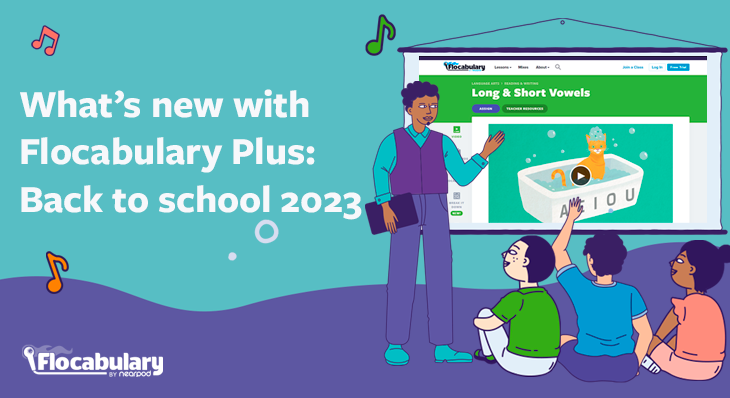
What’s new with Flocabulary Plus: Back to school 2023
This back to school, Flocabulary is returning to its roots and announcing exciting new updates to boost students’ vocabulary acquisition. With our new analytics for administrators and educators and personalized vocabulary practice sets for students, districts will gain visibility into student achievement and be empowered to close gaps in vocabulary across the curriculum. Keep reading to explore the new updates coming soon this spring.
The power of Flocabulary for vocabulary acquisition
Research shows that vocabulary is the biggest predictor of reading comprehension. Students need to know the meanings of 90-95% of words in a text to comprehend it, and vocabulary is an especially strong predictor of comprehension of informational text. (Nagy & Scott, 2000; Yildirim, Yildiz & Ates, 2011). Flocabulary incorporates instruction of general academic and subject-specific vocabulary into every lesson. In 2009, a study conducted by the Educational Research Institute showed that using Flocabulary’s vocabulary lessons increased students’ proficiency in vocabulary in school and scores on state reading tests. We are excited to release updates to our Flocabulary Plus license to accelerate students’ vocabulary acquisition through data-driven insights and practice.*
Launched in 2022, our Flocabulary Plus subscription expanded educators’ tools for teaching comprehension strategies across subjects with a new instructional experience called Flocabulary Mix and a new analysis tool called Break it Down. In January 2023, we expanded our Flocabulary Plus subscription with the ability to add co-teachers and a new library of 200+ Nearpod Originals lessons, making it easier to collaborate with colleagues to reach every learner.
With our latest release of an analytics dashboard, school and district administrators and classroom educators on Flocabulary Plus licenses will be able to see the impact of Flocabulary on their students’ vocabulary acquisition across the curriculum and understand where to focus on accelerating learning.
*Our new vocabulary reporting and practice features are available to users with a Flocabulary Plus subscription.
What’s new with Flocabulary Plus
Vocabulary instruction in Flocabulary
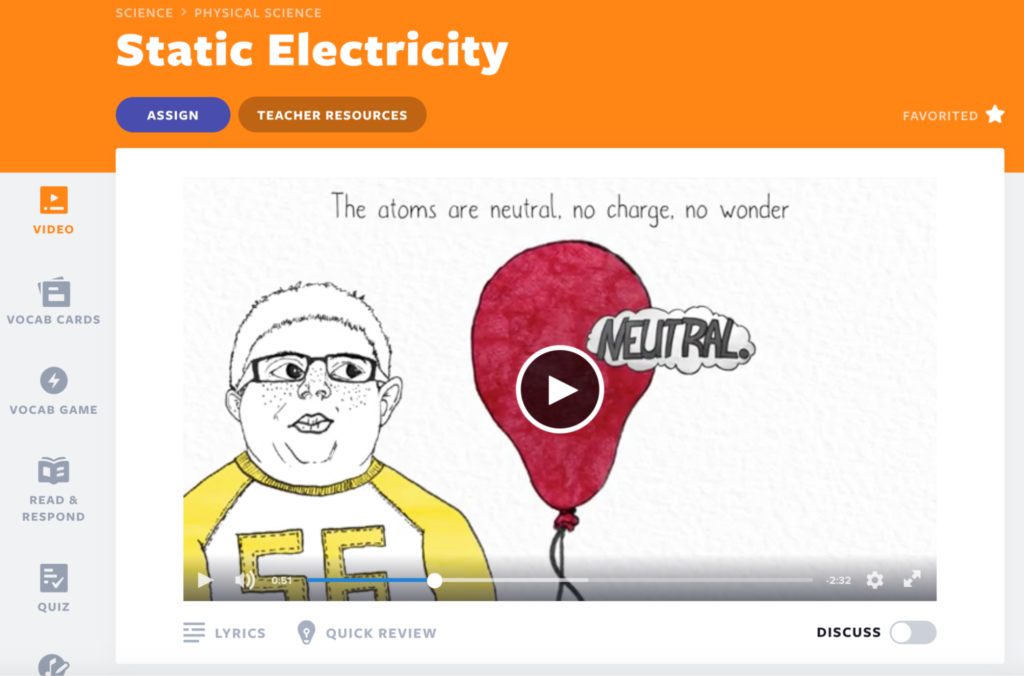
General academic (Tier 2) and subject-specific (Tier 3) vocabulary words are woven through the Flocabulary lesson sequence, providing students with multiple exposures and practice opportunities. Students are introduced to the key vocabulary words in the video, which are used in context in the lyrics or script. The accompanying activities provide additional opportunities for exposure and practice, building in complexity to help students master vocabulary.
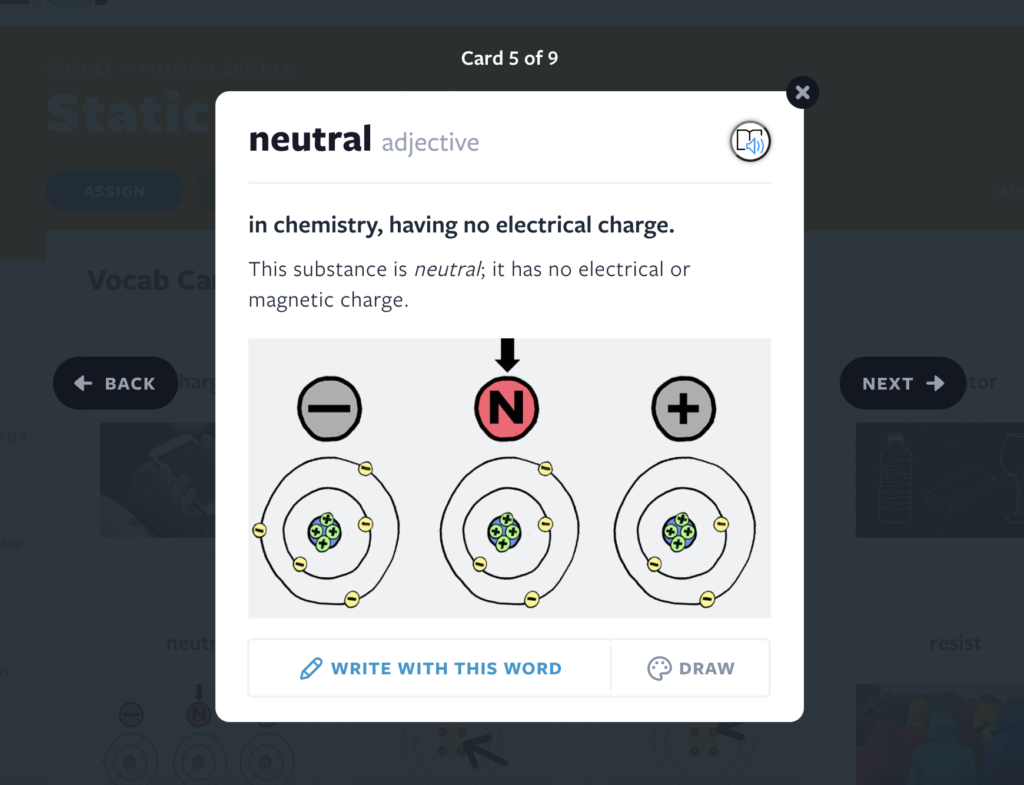
For example, on the Vocab Cards—based on graphic organizers like the Frayer model—students are provided with the definition, synonyms, antonyms, and images, and see the word used in another context in a sentence. They write their own sentence or example and/or draw the word to build their understanding of its meaning.
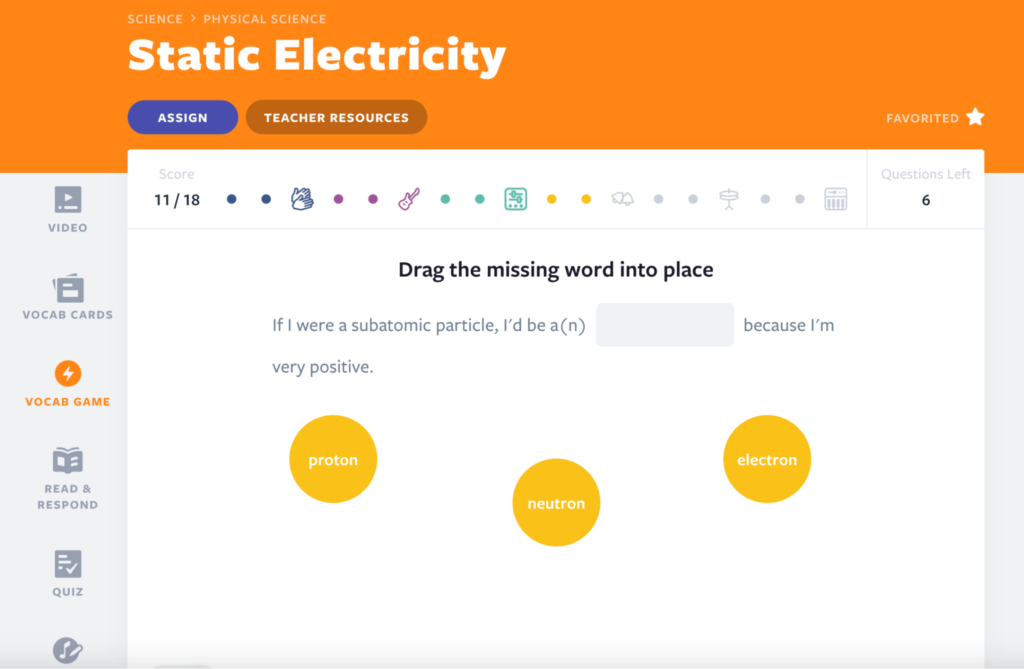
The Vocab Game offers students another opportunity to practice words by answering vocabulary questions while building a hip-hop beat. Questions include matching a word to its definition or image, using a term to fill in the blanks in the lyrics, and more.
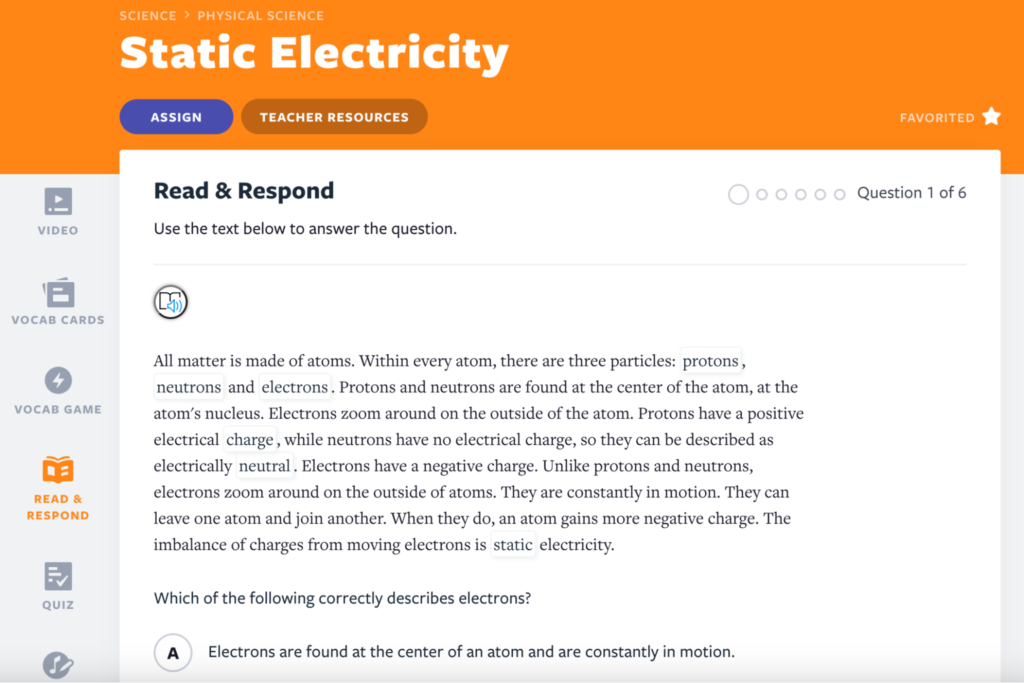
In Read & Respond, students are exposed to the vocabulary words in another context in the reading passages. They then answer text-dependent questions, building skills needed for high-stakes testing.
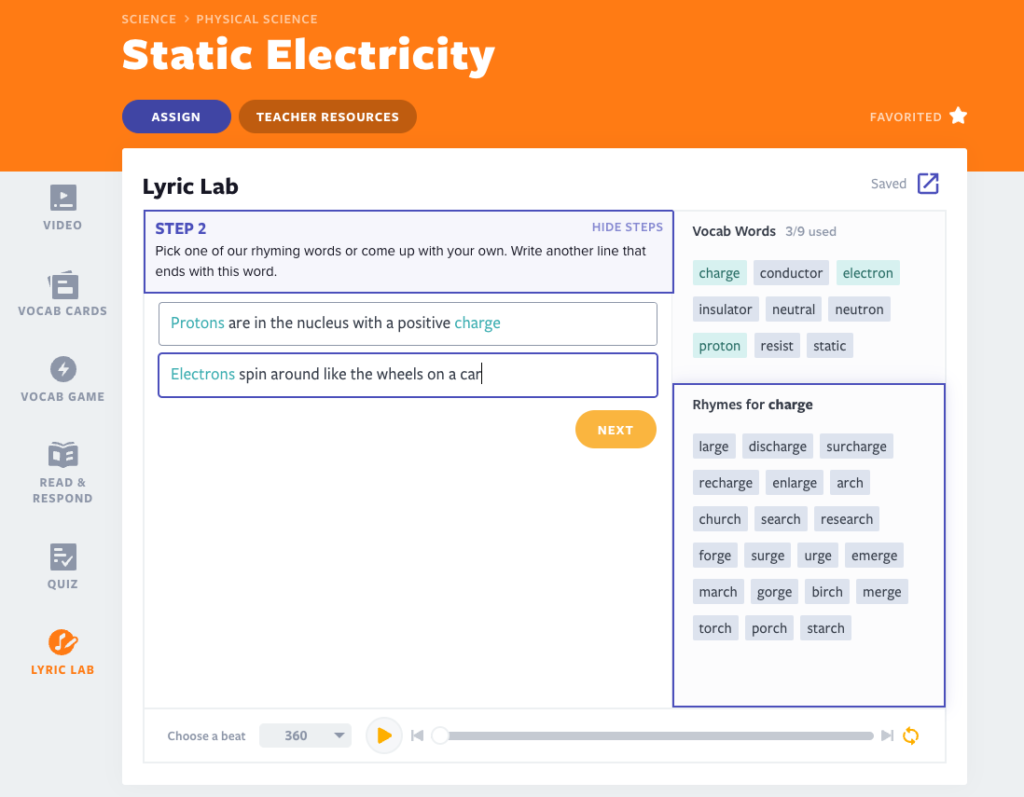
The Lyric Lab encourages students to use the vocabulary words in their own raps or poems. Students click to review the definitions, and vocab words highlight in blue as they’re used.
Actionable insights into vocabulary acquisition for administrators
With our new analytics dashboards, you can now gain insight into Flocabulary’s impact on their students’ word exposure and word practice, as well as how students perform on vocabulary words across subjects, schools, grades, and classes.
The US Department of Education recommends 17 exposures to a vocabulary word to help students master them (Bennett, 2019). On the new Analytics section of the homepage, you can view the average number of word exposures per student in your school or district, as well as the number of words students have been exposed to. You’ll also see how often students’ comprehension of vocabulary words has been explicitly assessed through word practice items like the Vocab Game, and the level of proficiency students are showing on these words based on their practice scores.

Then, dive deeper into the data to assess where Flocabulary is implemented most effectively to impact students’ vocabulary in your school or district. As students complete more lessons, both assigned and independently, you can view the number of exposures to vocabulary words students have had across the curriculum, providing insight into where Flocabulary is implemented across departments and highlighting opportunities for growth. You can even compare the number of exposures within different domains in a subject like life science and physical science.
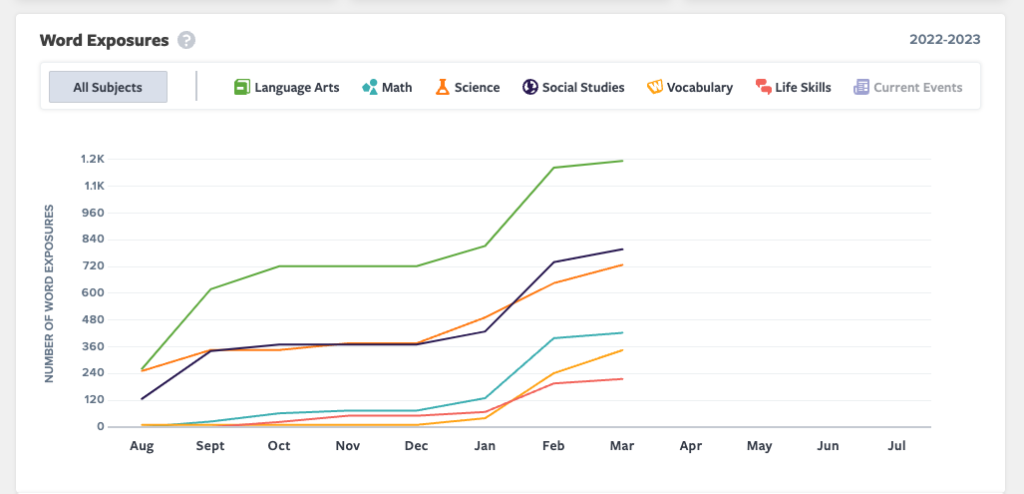
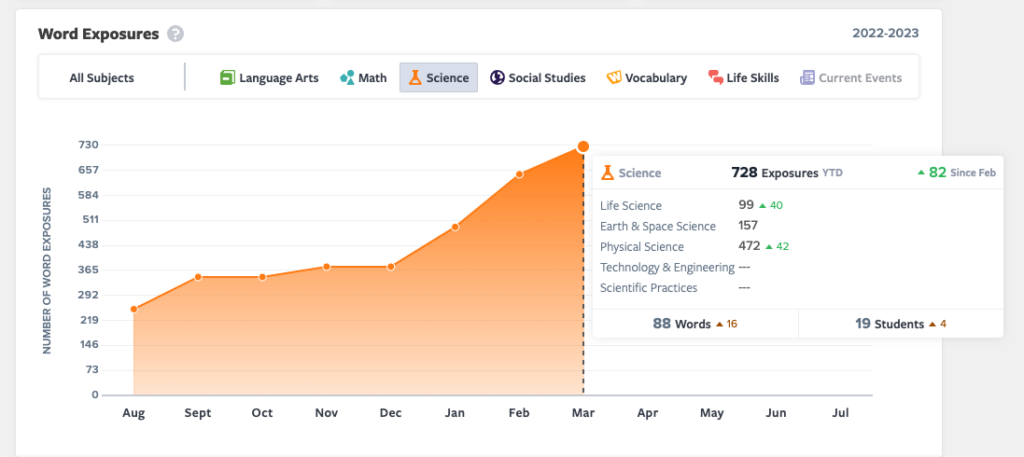
Make more informed instruction decisions! You can view and compare students’ levels of proficiency in vocabulary across subjects, assess progress against school or district initiatives, and identify where you may need to focus on meeting goals. Professional learning communities leverage insights into the specific words most students perform well—or struggle—with.
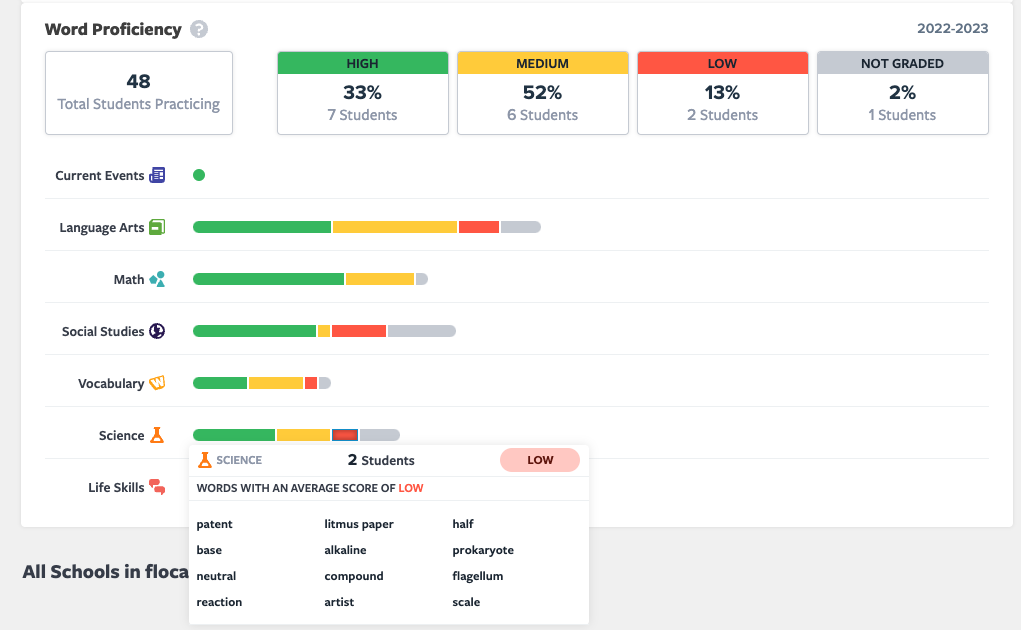
District administrators can compare Flocabulary implementations across schools and classes to identify campuses, grade levels, and educators maximizing the impact of Flocabulary. Also, you can gather best practices to share with the rest of the school or district. Assess the level of word proficiency at each school and within each class, pinpointing areas of strength and those that need intervention.
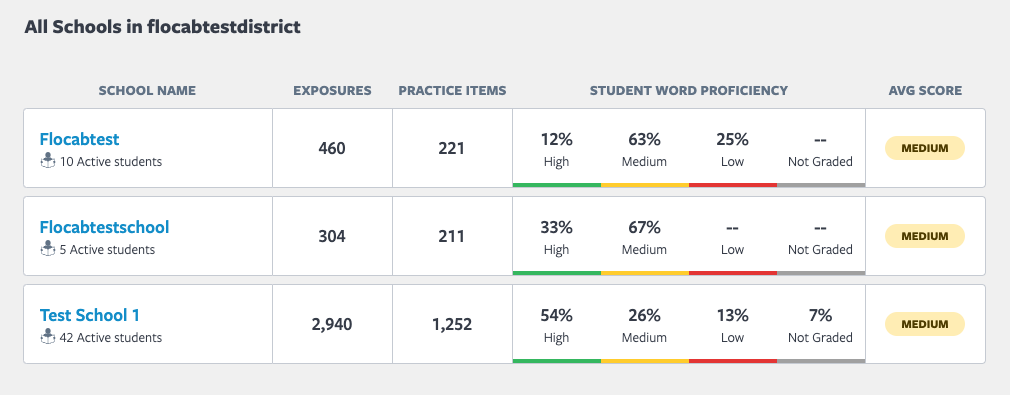
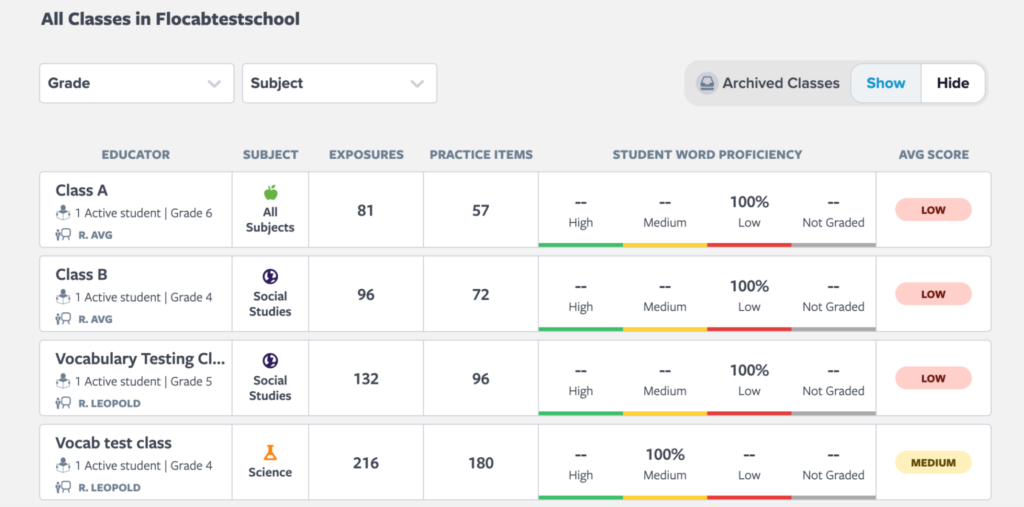
All data is available at the district and school level for district administrators and at the school level for school administrators.
Equipping teachers with insights to inform instruction
In addition to providing administrators with insights into the impact of Flocabulary on students’ vocabulary acquisition, we want to directly equip educators with the data to identify areas of strength and opportunities for remediation within their classes, along with the tools to provide individualized vocabulary instruction. Introducing: vocabulary analytics for teachers!
Teachers on Flocabulary Plus plans will see a new tab in each of their classes called “Vocab Analytics.” Here, you can view students’ progress on vocabulary in each subject that you use Flocabulary to teach.
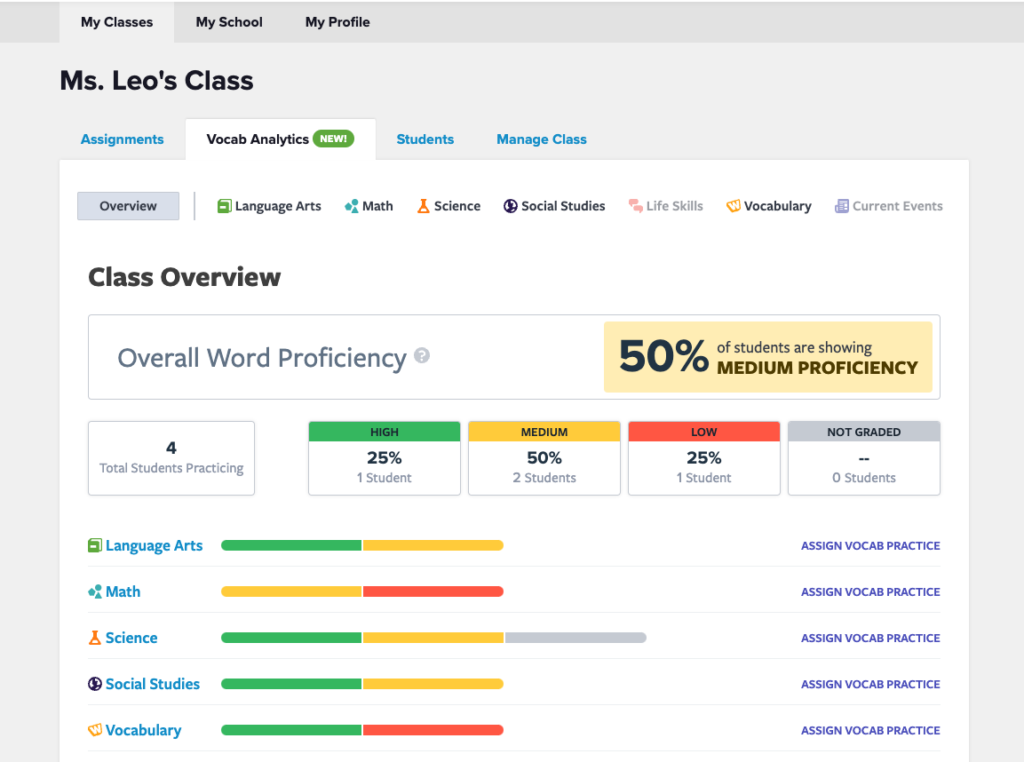
First, assess students’ proficiency in vocabulary across all subjects. View performance within each subject to identify areas where students are showing high proficiency and those in which they could use more practice. Once you identify a subject you’d like to focus on, click for more detailed insights.
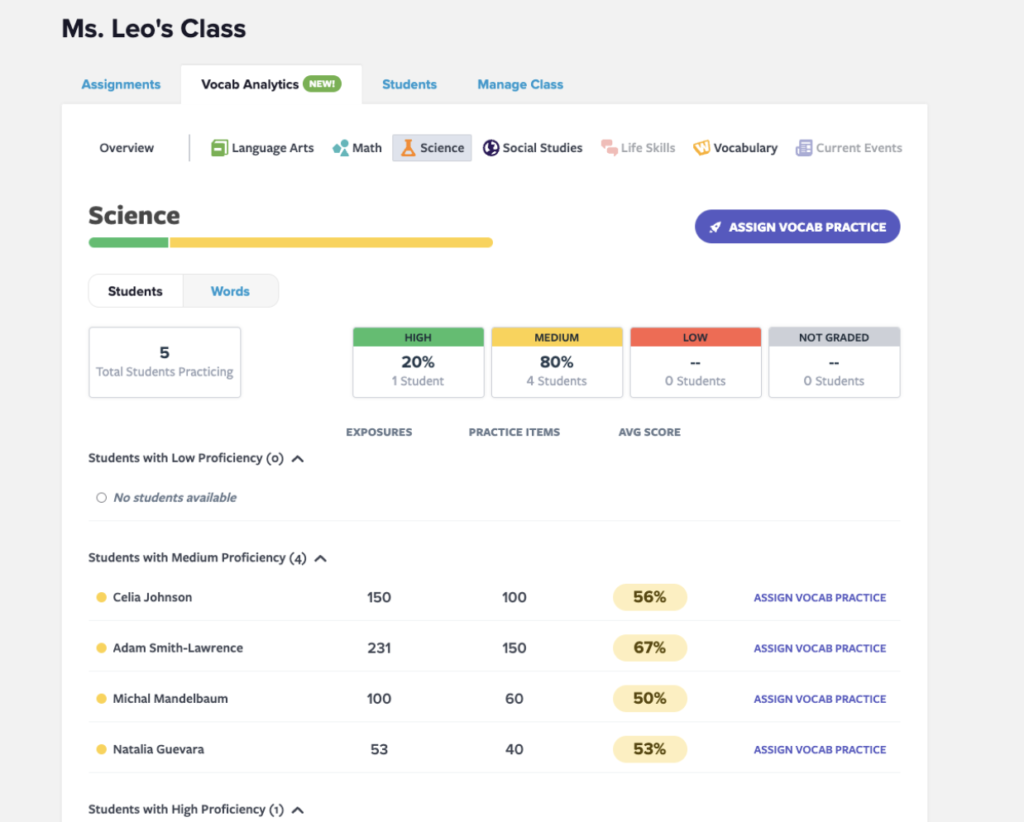
Here, in addition to viewing class-level metrics, you can identify the individual students who are showing high, medium, and low proficiency in vocabulary within that subject, enabling you to provide targeted support.
Toggle to view subject data by word to identify the words that most of the class is struggling with and that would merit reteaching.
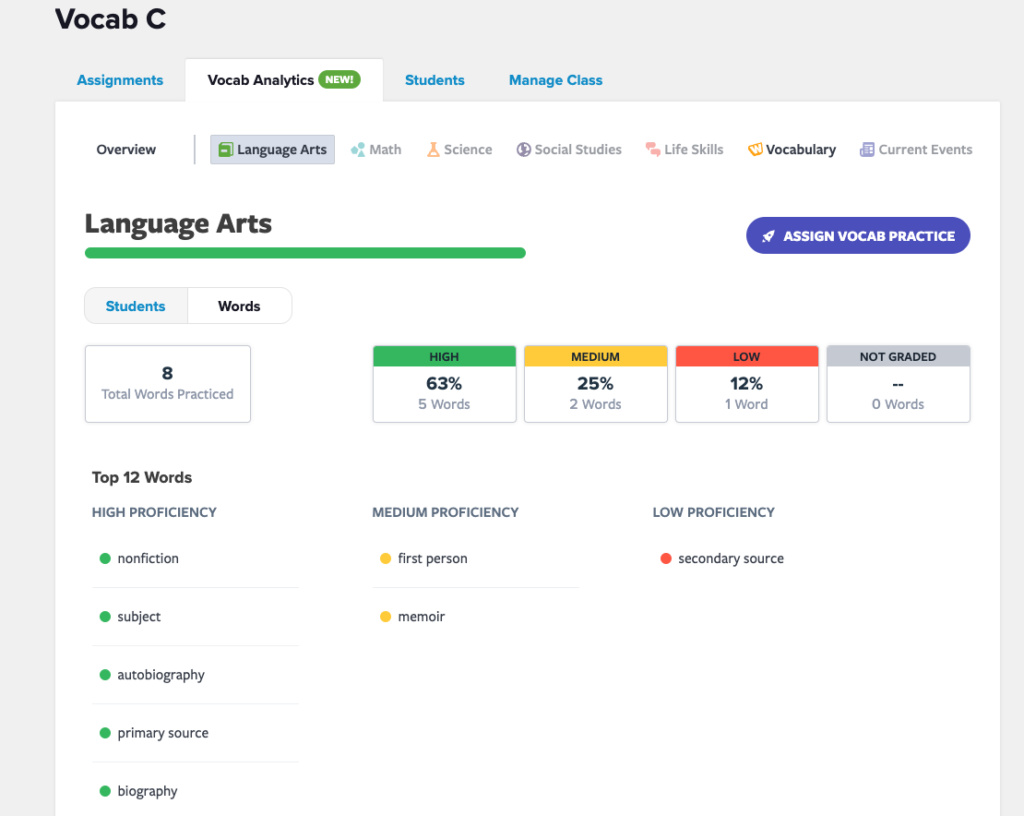
In the Overview, you can view each student’s vocabulary activity and proficiency side by side for insight into individual students’ progress across subjects. Click on a student’s name to view details about how they’re doing in each subject, including the particular words on which that student is showing high, medium, and low proficiency.
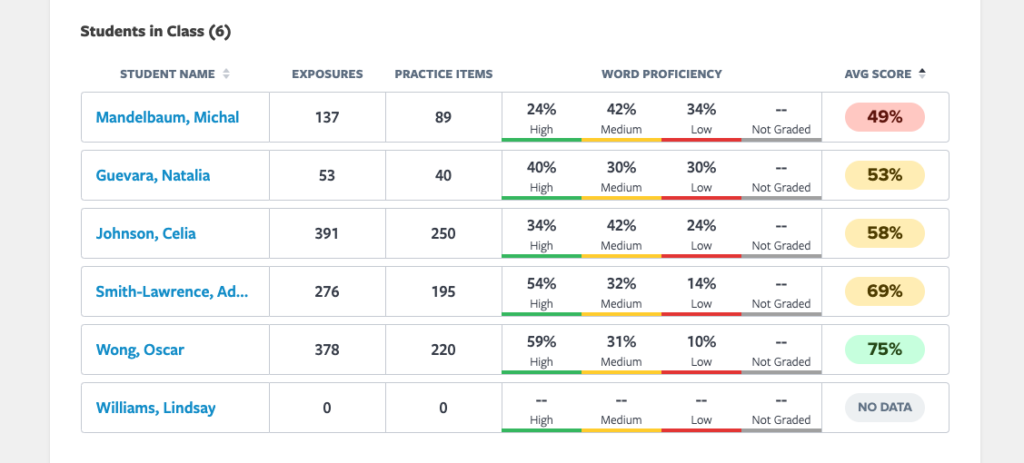
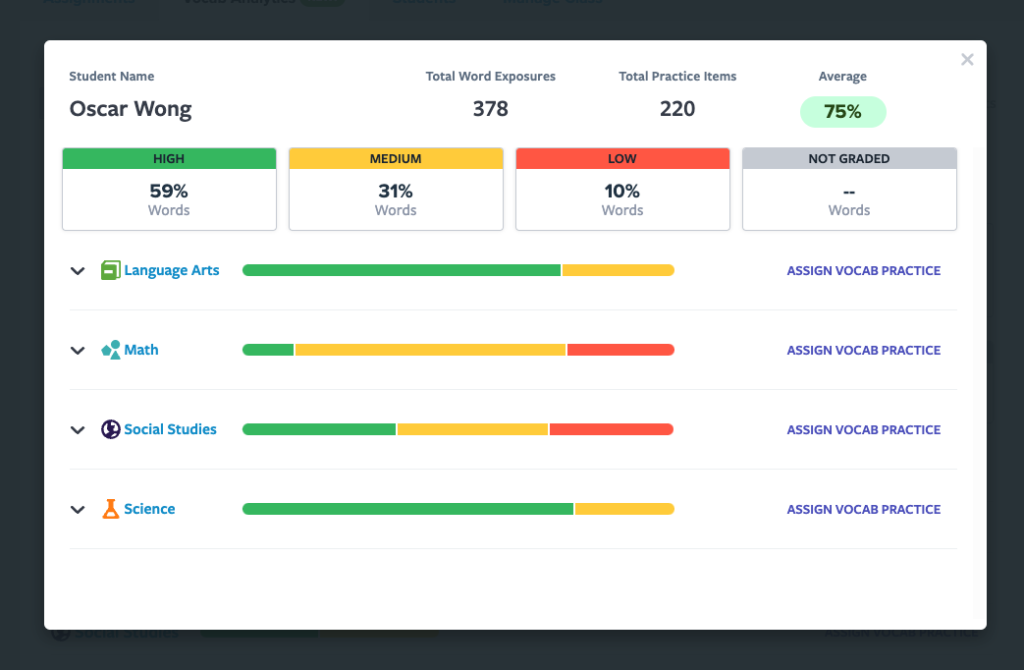
Share this data with students and their parents or guardians during 1:1 instruction and progress conferences!
New: Personalized vocabulary practice for students!
In addition to providing rich insights into students’ vocabulary acquisition, we are also empowering educators with the tools to provide individualized vocabulary instruction and improve student outcomes with our new auto-generated, personalized vocabulary practice sets!
These practice sets facilitate data-driven instruction by enabling teachers to easily give students targeted practice with their low-proficiency words.
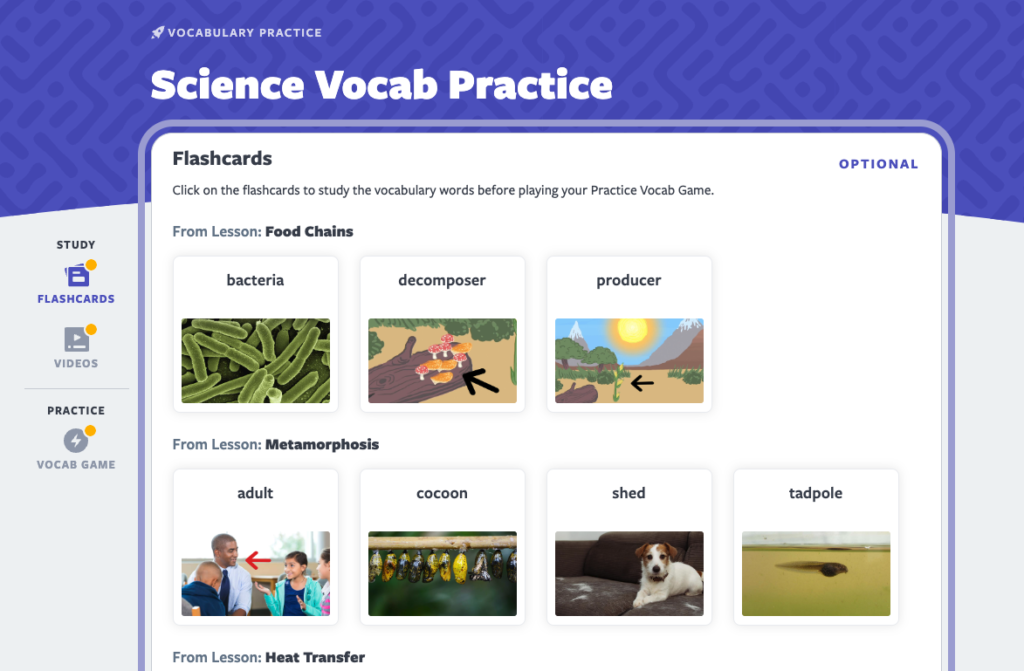
Using their vocabulary analytics dashboard, teachers can identify a subject in which they’d like to give students more vocabulary practice. They can then select the students they’d like to include in the assignment and, with a single click, send out an assignment with study and practice materials tailored to each student, based on their past performance.
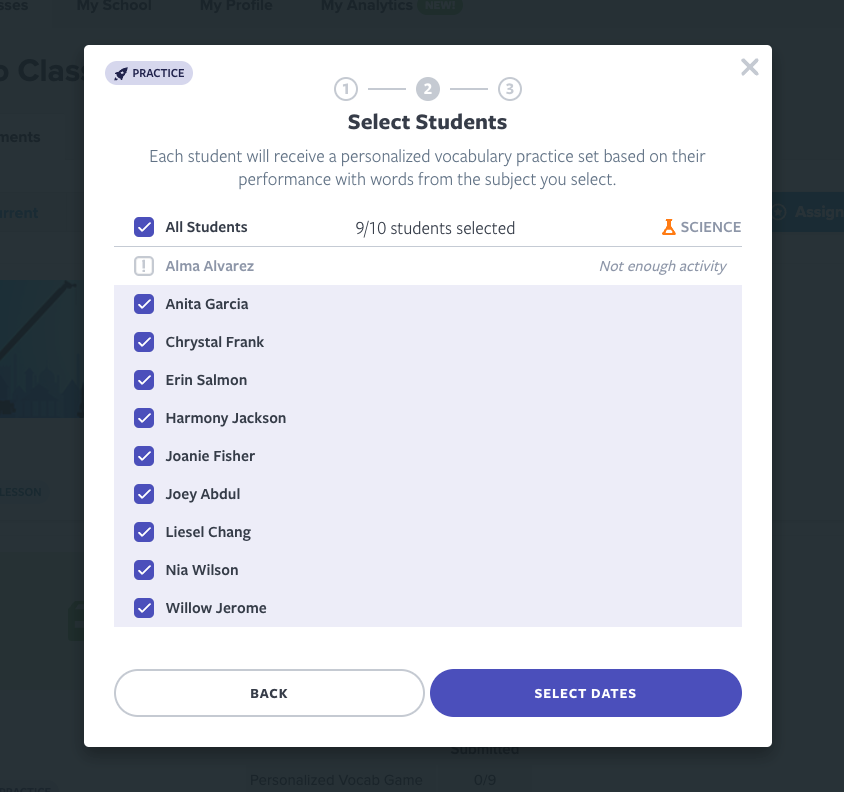
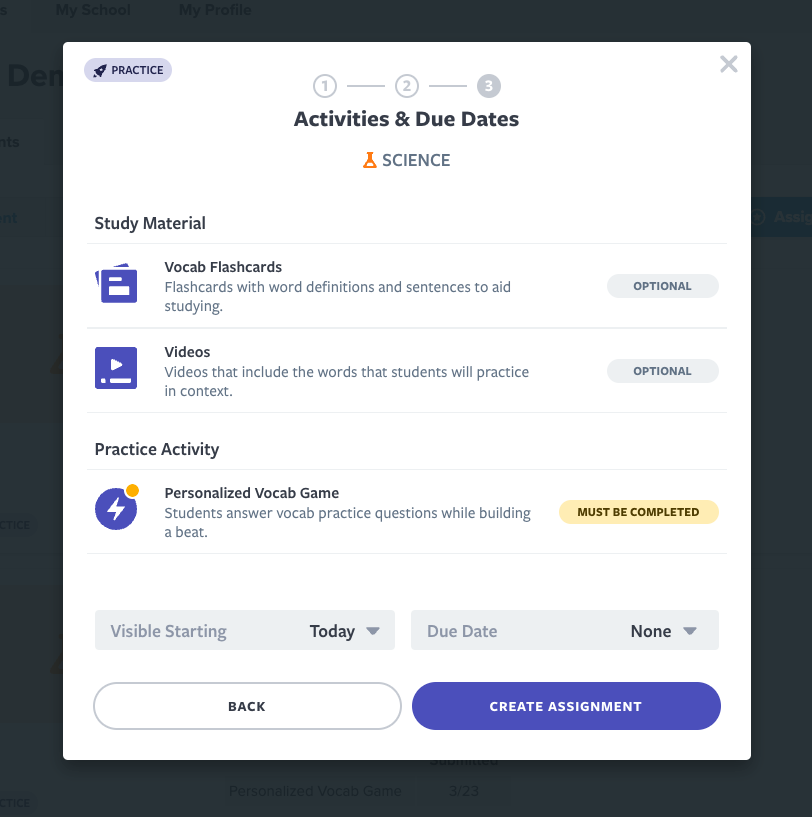
When working one-on-one with students, teachers can also click to quickly assign them a practice set from a subject dashboard or student detail view.
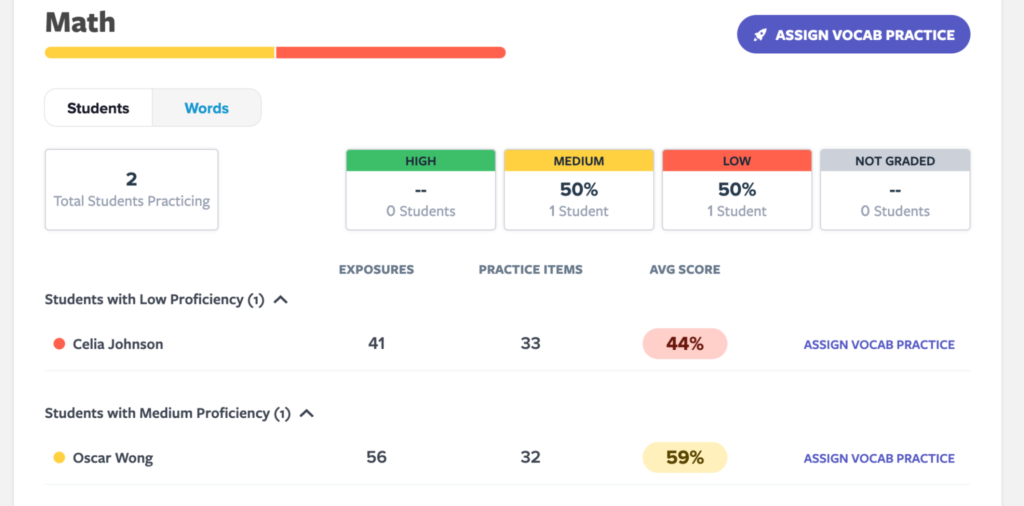
These personalized practice sets provide students with the opportunity to boost their word proficiency across subjects. Teachers and administrators can see the impact reflected on their vocabulary analytics dashboards.
Learn more about Flocabulary Plus’ updates
Flocabulary accelerates learning and academic vocabulary through rigorous and authentically engaging instructional experiences. We’re excited to see how administrators and school leaders use Analytics to bring the joy of Flocabulary into your school and measure its impact.
Don’t have a Flocabulary Plus account? Get in touch with us!
